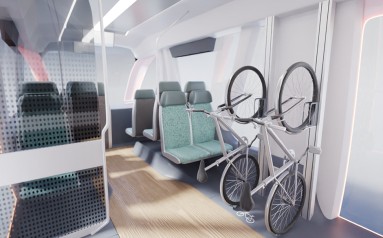Page content
A new boost for abandoned railway lines

The NGT-TAXI is ready for use around the clock.
Rail transport is one of the most promising pillars of the mobility revolution. Its goals include the doubling of passenger transport capactiy by 2030, the integration of innovative drives and the digitisation of both vehicles and fixed assets. As a perspective, disused sections will be put back into operation so that the rail network will be expanded. This is where the NGT-TAXI from DLR railway research comes in. The abbreviation NGT stands for Next Generation Train and summarises all the concepts and technologies for rail transport of the future.
Flexible and demand-orientated operating concept
The NGT-TAXI focusses on branch lines, isolated lines and stand-alone networks which are physically disconnected from other lines. DLR is developing various operating concepts for such infrastructures, for example either fixed-interval operation during some hours of the day or on-demand operation at other times. Automated operation means that the vehicle is ready for use around the clock. It runs when it is needed and, depending on the number of passengers, in the appropriate size and in virtually coupled clusters. Empty journeys can thus be avoided, operating and maintenance costs reduced, the service life of components extended and resources conserved.
Modular vehicle and traction concept
The vehicle structure and drive concept of the NGT-TAXI can be flexibly adapted to the conditions of the routes and the volume of passengers. The shortest version is just under ten metres long and has twelve seats. The longest measures 17.5 metres and has 54 seats. This is made possible by the combination of different carriage modules. The futuristic rail bus is powered by climate-friendly batteries or fuel cells. Up to a range of around 100 kilometres, batteries are sufficient. To cover longer distances, DLR is rely ing on fuel cells in combination with smaller batteries. The drive concept has standardised power packs depending on vehicle size, route profile and range. Standard control and safety technology is used for mixed operation on main lines. A simplified safe technology is used for isolated routes. As the NGT-TAXI is very agile, the DLR uses approaches and components from the automotive and tram sectors. Virtual coupling of the vehicles is also possible. This also allows the capacity to be quickly adapted to demand at any time.
German Aerospace Centre (DLR) Hall 2.2 | 440

